


REVIEWS OF OUTSTANDING CD RELEASES



![]()
MAMIE SMITH - CRAZY BLUES Columbia/Legacy
LUCILLE BOGAN - SHAVE 'EM DRY Columbia/Legacy
ROOSEVELT SYKES - CHICAGO BOOGIE Delmark
CAREY & LURRIE BELL - SECOND NATURE ALLIGATOR
JIMMY BURNS - BACK TO THE DELTA Delmark
FRUTELAND JACKSON - BLUES 2.0 Electro-Fi
FATS DOMINO - BLUES KING PINS Capitol
RENEE AUSTIN - SWEET TALK Blind Pig
VARIOUS - BAR ROOM BLUES Telarc
VARIOUS - WILD ABOUT THAT THING Delmark
IKE TURNER - KING
PINS Capitol
JAMES SOLBERG - REAL
TIME BLUES ECLIPSE
PAULINE YORK BAND - BLACKBERRY WINE
THE STORY OF THE BLUES SONY/LEGACY
WHEN THE SUN GOES DOWN (4 vol) RCA-BLUEBIRD
![]()
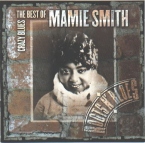 MAMIE
SMITH - CRAZY BLUES
MAMIE
SMITH - CRAZY BLUES
For years I believed and told others that Mamie Smith recorded the first blues record. Recently a new book, Escaping The Delta, debunked that myth, detailing that the first blues record was made by W.C. Handy’s band in 1914. Handy recorded his famous Memphis Blues as an instrumental that year and a year later, a fellow named Morton Harvey recorded the song as a vocal. So Mamie was not the first singer to record blues, but she was the first woman singer to do so and her record in 1917, inspired numerous other record companies to take the plunge, creating the era of “Barrelhouse Bessie” type female vocalists.
Mamie was technically not a blues singer. She was a vaudeville entertainer who danced, played piano and sang with a powerful, penetrating voice. She was filling in for Sophie Tucker when her big chance came. Perry “Mule” Bradford, a pioneering producer of African-American music, convinced Okeh Records (after seven other record companies turned him down) that there was a market for a black singer and they decided to give Mamie a try.
Her first record was mildly
successful—enough to get her a second disc. It was that second one that
changed everything. “Crazy Blues” captured the black, record-buying public
like nothing had before, selling over a million of those easy-to-break, 78 rpm
discs in six months, and ushering in the era of “race” records. Mamie became
the blues first superstar, soon to be challenged by Ma Rainey, Ida Cox, Alberta
Hunter and others.
After her career was derailed by the Great Depression, Mamie Smith continued to
tour with various bands. In the late thirties and early forties, she starred in
several short and feature-length movies, including; Paradise In Harlem
and Murder On Lenox Avenue. She retired from showbiz in the mid-forties.
The recording dates on this album range from 1920 to 1931 when Mamie was at the
top. This noteworthy anthology also includes several photographs and posters of
the first ‘Queen of the Blues’.
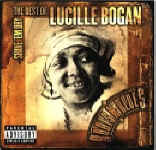 LUCILLE
BOGAN - SHAVE 'EM DRY
LUCILLE
BOGAN - SHAVE 'EM DRY
One of the wildest characters you’d
ever meet, Lucille Bogan was either a very good actress, or one of the bawdiest
women who ever sang the blues. Her first records came out in 1923, the same year
that Bessie Smith, Ma Rainey and Ida Cox made theirs.
Bogan came from Alabama and is credited with making the first blues record in
the south, “Pawn Shop Blues.”
In the early 30’s, she signed a
recording deal with ARC Records, a low-budget label that sold 78’s for a
quarter. Trying to capitalize on the fame of Bessie Smith, ARC renamed Bogan
“Bessie Jackson,” and it was under that name that she became famous.
Bogan’s songs dealt mostly with
metaphors. Her risqué subjects had to be toned down for the public, so cocaine
became “baking powder,” and sexual favors became “barbecue,” “stew,”
or “groceries.” However, there are three tracks on this collection that
don’t bother with metaphors. Bogan’s
uncensored versions of “Shave ‘Em Dry” and “’Til The Cows Come Home”
are as raunchy as anything you’ll find in a porno shop. They were recorded by
Bogan and friends as a private joke and not intended for public release. The
masters were destroyed, but copies have emerged that give us a taste of the real
Lucille.
“Shave ‘Em Dry” is an excellent
collection of Bogan’s best quality recordings, made from 1933-1935 when the
tough, independent woman was at the top. Bogan is accompanied on most of the
tracks by her longtime pianist/guitarist, Walter Roland. Josh White backs her up
on “Man Stealer Blues.”
Whether or not Bogan’s lewd persona was her real self is still a matter of debate. Not much is known about her personal history. We do know that she lived in Birmingham all her life and moved to Los Angeles only a few weeks before her death in 1948. However, from the frank content of her lyrics concerning drug use, drinking and sex, one could assume that little Lucille had been around the block—maybe more than a few times.
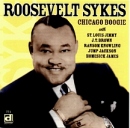 ROOSEVELT
SYKES - CHICAGO BOOGIE
ROOSEVELT
SYKES - CHICAGO BOOGIE
Although he was one of the pioneers
of blues and is considered to be the architect of St. Louis blues piano, you
don’t hear much about Roosevelt Sykes these days. This collection of
tracks recorded in the fifties and sixties may help change that.
Sykes, known as “The Honeydripper,” was an immense figure in early blues. His ebullient vocals and powerhouse piano kept him in the spotlight for more than thirty years. He was a major influence on Memphis Slim, Eddie Boyd, Fats Domino, Pinetop Perkins and many other piano ticklers.
He made his first recordings for Okeh
in 1929. Those old 78’s sold so well that he became a hot item with other
record companies. Not one to discourage attention, Sykes recorded for several of
them using different names. He was "Bobby Bragg" for Paramount
Records, "Willie Kelly" for Victor and "Easy Papa Johnson"
for Vocalion—all before the end of 1930.
After recording for several labels,
he signed with Regal Records in 1950 and this CD starts with his first session
on March 14. It was a bare-bones affair with just Sykes and a drummer rocking
out on a half-dozen songs, including the salacious first release, “Rock It.”
Sykes' next session for Regal produced “Drivin’ Wheel,” a remake of his
1934 hit. This was the record that inspired Junior Parker to record his own
version for Duke Records a few years later. Parker’s record made the top five.
In 1951, Sykes had one more session
for Regal with a larger backup group featuring J.T. Brown on tenor sax and
Ransom Knowling on bass. Some real gems from this session include the title
song, “Wonderin’ Blues,” and “Security Blues.” More than half of the
tracks selected for this compilation were previously unreleased.
“The Honeydripper” finally left Chicago in 1962, moving to New Orleans, where he became a local treasure, playing clubs and festivals until his death in 1983. Sykes played the blues, but he was also a cure for the blues, stompin’ and rompin’ at the 88’s while he chewed on his big cigar. He was a genuine blues hero and “Chicago Boogie” is a welcome contribution to his recorded legacy.
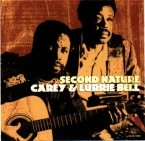 CAREY
& LURRIE BELL - SECOND
NATURE
CAREY
& LURRIE BELL - SECOND
NATURE
Alligator
Lurrie Bell has been playing the
blues with his dad, Carey Bell, since 1977. Carey, the well-known harmonica vet,
who played with Muddy Waters and Willie Dixon, raised his kid to play the blues,
shoving a guitar in his hands when he was just a tiny tot. Lurrie came along
fast and has made his living as a musician ever since his teen years. Lurrie has
played on most of his dad’s albums, but they had never recorded an album with
just the two of them.
Then came a tour of Finland, one
long, cold, winter in 1991. Seems they had a month-long blues festival up there
and Carey and Lurrie found themselves going from town to town, playing the blues
to audiences that hadn’t seen much sun in a while. The producer of the
festival, Chip Covington, watched the father-son duo perform for a few nights
and decided he had to find a studio to capture their magic. He called a Finnish
friend who found a studio in the next town and an hour later the pair was
recording the songs on this album.
There was no rehearsal for the session, no overdubs. Everything went down in one take on a cold, dark day. And the result was warm and wonderful. The intimate settings produced intimate recordings. Carey and Lurrie have never sounded better. Along with several original songs, the duo performs classics like Key To The Highway, Five Long years and Rock Me. Play this for anyone who thinks you need a million dollars worth of equipment to make an album. Carey and Lurrie Bell prove that simpler is better.
![]()
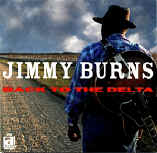 JIMMY
BURNS – BACK TO THE DELTA
JIMMY
BURNS – BACK TO THE DELTA
Delmark
Jimmy Burns
is no youngster. He’s been around longer than television, growing up on a
Mississippi plantation and migrating, with thousands of others
to the blues Mecca of Chicago.
Blues came early to Burns. His father
was a pretty fair guitarist and when the family went to town on Saturday night,
five-year-old Jimmy listened to the records of John Lee Hooker and Muddy Waters
on the jukebox.
The Burns family moved to Chicago in
the 50’s. “I couldn’t wait to get there,” says Jimmy. “(We) had heard
so much about Chicago. We considered it the land of milk and honey.”
Blues was hot in Chi-town back then, but Doo-Wop was even hotter with
teenagers. Jimmy hooked up with a vocal group and as rhythm & blues turned
to soul music in the 60’s, so did he, recording several singles.
With no big successes to keep him in
the music business, he became a full-time carpenter for many years, but his
interest in music never lagged. In the late 70’s, inspired by two youngsters
named Billy Branch and Lurrie Bell, he decided to return. “Damn!” he told
his wife, “I’m gonna put me together a blues band.”
Fast forward to 1996 when Burns
recorded his first album for Delmark Records. Critics liked his original style,
part Delta, part Chicago, and part soul. Delmark was pleased and has released
two more albums, the latest earlier this year.
“Back To The Delta” is about the “…Delta music, the stuff I remember,” Burns says. “I go back every year...to keep in touch with the land.” He wrote most of the songs for the CD, but included Muddy Waters’ “Feel Like Going Home,” (featuring a dandy slide solo) Sleepy John Estes’ classic, “Someday Baby,” and Howlin’ Wolf’s “How Many More Years.”
Listening to this CD is an enjoyable 67 minutes. “Back To The Delta” takes you back down Highway 61 to the place where the blues was born, for a unique perspective from one of its native sons. It’s another solid entry from Delmark, now celebrating their 50 years of recording jazz and blues.
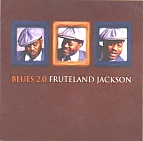
FRUTELAND JACKSON - BLUES 2.0
Electro-Fi
Fruteland Jackson is
one of a select group of artists who are dedicated to preserving and performing
acoustic blues. As an oral historian, he has received awards and
acclaim for his research and presentation of the history of the blues. As an
Acoustic Blues Artist, he has performed in hundreds of venues in America, and
many more in Spain, France Britain and Italy.
Jackson grew up in
Sunflower County, Mississippi. He lived in Chicago for many years but returned
to his Mississippi roots in his thirties. He ran his own wholesale food company,
but after four years, it was destroyed by hurricane Elena. With the hurricane,
came the blues. Jackson began to immerse himself in blues music. "The
blues was a comforter for me, always my healer during difficult times," he
says. Nearly stranded on the
Gulf Coast with his family, he did what it took to survive while spending hours
every day with the blues. “I dug up old records. My fathers old seventy
eight’s," he recalls. He began to reclaim his past, putting
names with faces, from the wail of field-hollers to B. B. King.
His first album,
“Blues 2.0”, is a powerful collection of songs that was nominated for a
Handy Award as best acoustic album of the year. Many of Jackson’s original
compositions combine contemporary themes, played in the classic styles of early
blues performers. The CD starts off with the title track, a dramatic modern song
about a man’s struggle to pay his bills. Jackson is a compelling songwriter. Hittin’
The Note magazine says he “writes, sings and plays songs that place him in
a class all his own”. Other standouts on the album include; Long Distance Love
Affair, How Could We Live Without Love, Sometimes Bad Man Blues and The Lonely
Traveler.
You will find more information on this fascinating performer at: http://www.geocities.com/athens/stage/1089/
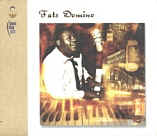 FATS
DOMINO – BLUES KING PINS
FATS
DOMINO – BLUES KING PINS
Capitol
Say, “Fats
Domino” in a bar, and (if the people next to you are old enough and have
had enough to drink) you’ll probably hear them burst out singing, “I found
my three-ee-l on Blueberry Hee-ee-l,” or maybe, “I got a whole lot of lovin’,
(bomp bomp) for you.” Or it could
be another of the long list of hits recorded by “The Fatman.”
Fats burst into the spotlight in 1955 when his recording of "Ain't That A Shame," was covered by white recording artist Pat Boone. Boone's version went to number one, and Domino's version went to number ten. It was one of the early “crossover” hits, appealing to black and white record buyers alike.
Fats would go on to dominate the pop
and r&b charts for nearly a decade, becoming one of rock & roll’s
earliest stars and selling more records than everybody but Elvis Presley. Many
volumes of his hits have been previously released on CD, but until recently,
there was little attention paid to Fats’ earlier recordings.
A New Orleans native, Fats grew up
with lots of music in his life. He was particularly fond of records by Louis
Jordan, Charles Brown and the boogie-woogie triumvirate, Pete Johnson, Albert
Ammons and Meade Lux Lewis. His first public performance was given at age 10. When
he was 14, he left school and worked days in a factory so he could
play at local clubs at night.
He made his first recordings in 1949,
coming up with a #2 R&B hit, “The Fatman,” at his very first session. He
continued his success in the early 50’s, knocking out winners like, “Every
Night About This Time,” “Goin’ Home,” “Poor Poor Me,” and “Going
To The River.” These songs and a
number of lesser hits recorded before Fat’s breakthrough in 1955 make up this
welcome collection.
Fats was deep into the blues—New
Orleans style, and his earlier recordings show that influence even more than his
later ones. He joyfully drives his piano on “Boogie Woogie Baby,” the
“Domino Stomp,” “Trust In Me,” and “Please Don’t Leave Me.”
Ballads include “Cheatin’,” “Something’s
Wrong,” and “Goodbye,” his sayonara to a lover.
For anyone wanting to explore the connections between blues and rock & roll, this is a good place to start. What is apparent from these earlier recordings is that Fats Domino’s music never changed. His New Orleans-style blues is pretty much the same today as it was in the 40’s. Rock & Roll came to Fats—not the other way around.
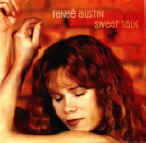 RENEE
AUSTIN - SWEET TALK
RENEE
AUSTIN - SWEET TALK
Blind Pig
Barely five
feet tall, redheaded Renee Austin packs a lot of
talent on a small frame. She has a five-octave voice and sings with the passion
of a turned-on tripper. Her singing and songwriting have been raved on by such
as Delbert McClinton--who isn’t too bad himself. McClinton had a big hand in
arranging for this album. He became a big fan after watching Austin open for him
at a Minnesota show in 2003. “Girl, you ring my bell,” he told her and
offered her some gigs.
Austin grew up
in Texas, absorbing the multi-cultural mix of Lone Star music as soon as she
started talking. “In Texas, the older, more seasoned artists garner the most
respect,” she says. “So I learned early on to respect styles by musicians of
all ages, makes and models – there’s a tremendous reverence for
tradition,” she notes.
Austin’s
debut album on Blind Pig Records will spotlight this tiny dynamo, who started
singing at the age of four and hasn’t stopped yet. Seven of the songs were
written by the redhead for her album, which is half-soul, half-blues.
Outstanding tracks include; Fool Moon, Bury The Hatchet, Ain’t Nobody and
Black Pearl.
I hope Renee Austin
isn’t a smoker. It’s easy to get the habit when you’re spending four or
five hours most nights in a bar—hell, you can suck down half a pack just from
the second-hand smoke in a lot of joints, but I hope she doesn’t also smoke.
Her voice is an instrument that deserves to be treated with the highest regard.
Austin has a cute website at: www.reneeaustin.com.
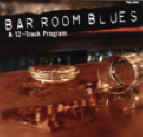 VARIOUS
ARTISTS – BAR ROOM BLUES
VARIOUS
ARTISTS – BAR ROOM BLUES
Telarc
I’ve spent enough nights hanging out in blues bars to have a pretty good definition of "bar room blues." They’ve gotta be loud, mostly up-tempo, mostly featuring a lead guitar and good to dance to. This compilation not only fills those bills, it also boasts a thematic component dealing with the mighty force behind all those bar room blues---alcohol.
Many are the songs written about the
joys, and the evils of demon booze. Bar Room Blues features contemporary artists
presenting a nice mix of “joys” and “evils.” Tommy Castro kicks off the
set with a rousing “Rip This Joint.” Other performers include Junior Wells,
who plays his “Last Hand Of The Night,” Kenny Neal, slick as always on
“Whiskey Tears,” and Charlie Musselwhite, facing the morrow in the “Cold
Grey Light Of Dawn.”
Bob Margolin contributes a thankful
“My New Baby Owns A Whiskey Store,” Sam Lay lays down an opus to “Pure
Grain Alcohol.” Little-known Troy Turner delivers a sizzling “Later Than You
Think” and Tab Benoit joins Kenny Neal on Willie Nelson’s “Nightlife.”
Bar Room Blues also features “Feelin’ No Pain,” a nice, long, slow one by
Tinsley Ellis, and Doug Wainoris’ tasty take on Willie Dixon’s “If The Sea
Was Whiskey (And I Was A Diving Duck).”
The highlight of the album for me was Luther “Guitar Junior” Johnson’s jumpin’ “Meet Me With Your Black Drawers On.” This CD is one you should probably put in the ‘party’ section of your library. Good for good times.
![]()
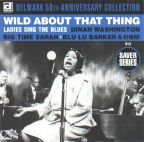 VARIOUS
- WILD ABOUT THAT THING
VARIOUS
- WILD ABOUT THAT THING
Delmark
As part of its 50th anniversary celebration, Delmark has reissued several collections of historic blues. “Wild About That Thing” puts together 12 ladies who sing the blues and they sing up a storm on this anthology, stretching over more than 50 years from 1944-2002. In the tradition of old time blues and with only a few exceptions, these ladies are large and loud.
Delmark dug into its ancient vaults to find songs by Dinah Washington, Betty Roche (remembered for her fantastic scat chorus on Duke Ellington’s Take The A Train) and Blu Lu Barker (“Don’t You Make Me High) from the forties. Two tracks recorded by Mary Johnson in 1955 were never released before. Edith Wilson contributes “He May Be Your Man” recorded in the seventies and the remaining seven tracks were recorded in the last decade.
Big Time Sarah gets top billing on the CD with “Long Tall Daddy”. Katherine Davis sings the title track, backed up by a hot trad jazz band. Karen Carroll, Bonnie Lee, Grana Louise, Shirley Johnson and Zora Young (“Brain Damage”) all contribute songs from their solo albums. This compilation is recommended as an introduction to a dozen women who undeniably sing the blues.
![]()
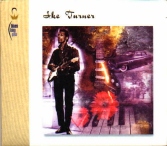 IKE
TURNER - BLUES KING PINS
IKE
TURNER - BLUES KING PINS
Capitol
As part of its “Blues King Pins”
series, Capitol Records has reissued a bunch of Ike Turner’s earliest
recordings. Ike played an important role in the formation of rock & roll. In
1951 his band, the Rocket Kings, under the name of saxophone player, Jackie
Brenston, released Rocket 88, which shot to the top of the r&b
charts. Some historians call this the first rock & roll record. That same
year Ike produced and played piano on sessions with Howlin’ Wolf, B.B. King
and Elmore James.
In 1952, Ike started recording under
his own name on the RPM label and that’s where this CD begins. Ike was still
playing only the piano then, but when he went to a music instrument store in
Memphis and saw his first Fender guitar, the piano took second place and Ike
went on to become one of the most proficient guitar players in the ‘slash and
burn’ category. Track five on this album is the first one to feature Ike’s
lead guitar. Recorded in 1954, The Way You Used To Treat Me, was
obviously inspired by The Things I Used To Do, which was a big hit at the
time.
There are several instrumentals in this collection. The fifties were fertile years for instrumentals and quite a lot of them became hits. Ike meanders through New Orleans and Memphis for his inspirations. Ike’s “piece de resistance instrumental” as Bill Dahl calls it in the liner notes, is the almost nine-minute-long track, All The Blues All The Time. Ike expertly recreates the styles of Elmore James, Muddy Waters, John Lee Hooker, Junior Parker and others. He didn’t title the track when he recorded it in 1954 and it was previously released only on a 98-cent LP in 1963.
“King Pins” covers the three years from 1952-54, when Ike and The Kings Of Rhythm were hot stuff on the jukeboxes. The late fifties were not as productive for Ike and his recordings were limited to backup roles with Otis Rush, Buddy Guy and a few others. It wasn’t until 1959, when Ike hooked up with Tina, that things began to cook again. If you like early roots rock, you’ll enjoy this collection of Ike’s early sessions.
Blues Eclipse
Damn! Sometimes I forget how good
James Solberg is. I got a copy of his latest release, Real Time, the other day,
put it on and was promptly knocked out. Then I remembered how much I enjoyed his
earlier albums. Solberg plays superb guitar, sings in a pleasant, barroom
baritone and writes significant songs. It’s a mystery to me why he’s not a
bigger name, considering that he played with Big Walter, Jimmy Reed, Johnny
Winter, Luther Allison, Elvin Bishop and John Lee Hooker—to name a few. He
also won a couple of Handy Awards.
Solberg co-wrote and arranged Luther
Allison’s three acclaimed albums on Alligator. He has recorded several solo
albums since his first release, “See That My Grave Is Kept Clean”, (a
critics favorite) in 1995. His new CD is a dynamic collection of tracks, all
showing off Solberg’s clean, high-energy
guitar leads.
Standouts on the album include the fast-lane opener, “It’s Alright”, an anti-war anthem, “Fightin’ All ‘Round The World”, the inspiring “Ever Seen A Rainbow”, the oddly up-beat “Down, Down, Down”, and “I Like Lovin’ You”, but don’t waste time pre-selecting tracks on “Real Time”, just put it on. This baby is good all the way through.
![]()
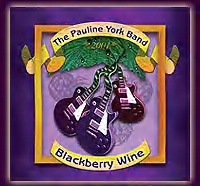 PAULINE YORK BAND –
“BLACKBERRY WINE”
PAULINE YORK BAND –
“BLACKBERRY WINE”
Billy Goat Records
As a DJ and reviewer, I get quite a few CDs sent my way. Most of them are by artists I’m familiar with, but now and then comes a disc by someone I’ve never heard of. Based on my past listening experience, I’d say the chances of finding something really good, on a CD by an “unknown” are about as good as the chances of finding a good restaurant by looking in the phone book.
I listen to them all though,
hoping to discover noteworthy new talent, and once in a while, I get a nice
surprise. So it was when I put on a new album by young singer, songwriter and
guitarist Pauline York.
There was very little
information on the album liner notes, nothing about the artist, so I googled her
name and came up with her web site (www.paulineyorkband.com).
There, I found out a little more about Pauline. Turns out she has real good
roots. She grew up in Texas and started playing guitar in her early teens,
inspired by the Freddie King and Jimmy Reed records her folks brought home.
Then came a move to
Louisiana where Pauline discovered Cajun music. A few years later it was on to
Memphis for some of that Stax soul. And finally, in 1997, she augmented her tour
of blues capitols by moving to Chicago, where she has lived ever since.
“Blackberry Wine” is
Pauline’s first CD and shows off her acquired skills as a singer and player.
Blues Revue magazine calls it “a remarkably accomplished blues debut.”
Pauline’s voice and vocal style reminds me some of Sue Foley and her guitar
style reflects many influences including Stevie Ray Vaughan, Magic Sam and Tab
Benoit.
Pauline is getting good airplay around the country with her first recorded effort. If you like a little edge to your blues and would like to be in on the start of what promises to be a fine career, take a listen to “Blackberry Wine.” With apologies to a popular soft drink, it’s “the pause that refreshes.”
In
May, 2003, Sony/Legacy, present owners of the Columbia blues vaults,
re-released “The Story of the Blues”. This historic anthology
first came out in the sixties as a complement to a book written by Paul Oliver.
It is a wonderful introduction to the foundations of the blues.
Oliver wrote extensive liner notes for the original album, detailing the beginning of the blues around the end of the Nineteenth Century. He divided the collection into four groups: The Origin of the Blues, Blues and Entertainment, The Thirties—Urban and Rural Blues, and World War II and After.
The Origin of the Blues
collection includes African tribal chants and some of the earliest artists to
record blues including Mississippi John Hurt, Blind Willie McTell, Charley
Patton, and Leadbelly. Oliver notes that after the Civil War, musicians
who had been making a living playing on the plantations, were forced to travel to earn
their keep. So began the tradition of rambling troubadors who walked, hitchhiked
or rode the rails to find performance venues.
The Blues and Entertainment
tracks feature performances from the twenties by Barbecue Bob, the Memphis Jug
Band, Bessie Smith, Bertha “Chippie” Hill and others. This was the music
heard in the juke joints and honky-tonks that sprang up all over the south and
in the big cities of the north. “The names were many,” Oliver wrote, “but
the places were all the same, simple wooden frame buildings with a floor for
dancing and a bar for drinking.” Sometimes a piano stood in the corner and it
was seldom unoccupied. In rural areas musicians often used homemade instruments.
A jug could be blown to sound like a bass. A washboard played with thimbles
sounded like a snare drum.
The twenties saw the end of
vaudeville and “classic blues” and the beginning of a new, urbanized blues
that featured smoother, more sophisticated songs. In the thirties, artists like
Leroy Carr, Jimmy Yancey and Memphis Minnie had success in the cities, while
artists such as Casey Bill, Robert Johnson and Bukka White were popular in rural
areas. This period is covered in part three of “The Story Of The Blues”.
The fourth grouping; World War II and After, continues the migration of musicians to the big cities and features Brownie McGhee, Joe Williams, Sonny Boy Williamson, Big Bill Broonzy, Joe Turner and others. It covers the time when electric amplifiers became popular, giving birth to the fifties blues explosion in Chicago. Featured artists include Muddy Waters, Otis Spann, Elmore James and Johnny Shines.
The
reissue also contains a dozen bonus tracks, extending the “Story Of The
Blues” into the present with recordings by Taj Mahal, Jeff Beck, The Electric Flag,
Janis Joplin, Johnny Winter, Stevie Ray Vaughan and Keb Mo.
Producer
Oliver concluded his original notes by saying, “Perhaps the story of the blues
is near its end; perhaps it may continue . . . but whatever its ultimate fate,
it will be remembered as one of the last, great, folk-art forms.”
The album was released with the book, “The Story Of The Blues”,
in 1969. Northeastern
University Press, Boston, published a new and updated edition in 1998.
Happily, Oliver’s worries about the end of the blues were premature and its survival and popularity make it seem unlikely that it will disappear anytime soon. The onset of digital recording has made most blues recordings accessible to everyone. Put almost any name in a search engine now, and you can likely find at least some of their recordings. From this blues fan’s viewpoint, we're living in a golden age.
` RCA Victor-Bluebird
four-disc
set
WHEN
THE SUN GOES DOWN
Back
in the twenties and thirties, the RCA Victor and
Bluebird labels were the
hottest blues labels going.
Many of the important blues figures of that era recorded
tracks for one or the
other. The owners of these labels
(now BMG) have been sitting on this gold mine for decades, with minimal
releases. But this August, (2002) the vaults were opened as the revived
Bluebird
label reissued 100 tracks of this colossal treasure trove.
“When
The Sun Goes Down” explores the development of blues in Memphis, New Orleans, Chicago and elsewhere from the mid-twenties through the Great
Depression. These were critical years in the formation of blues and these
tracks contain many original versions of songs that have become Rock ‘n Roll and
Blues standards.
The
sound of these old tracks is absolutely superb. Engineer Doug Pomeroy conducted
an exhaustive worldwide search for the best pressings available. The sources
include one-of-a-kind metal masters, vinyl test pressings discovered in the
vaults, mint-condition 78s borrowed from collectors and a significant stash at
the EMI archives in England. (EMI was once a partner of RCA Victor.)
State-of-the-art processing has eliminated virtually all extraneous sound from
these new masters. The result is extraordinary. The artists sound like they were
recorded yesterday.
The
four-volume set includes original versions of numerous songs later
made famous by Bob Dylan, Eric Clapton, Hank Williams, Count Basie,
Aretha
Franklin, Led Zeppelin and many other contemporary artists.
Volume
1 “Walk Right In” features Robert Petway’s “Catfish Blues,”
Leadbelly’s “Midnight Special,” Big Joe Williams’ “Baby, Please
Don’t Go,”
and 22 more
tracks from Alberta Hunter, Big Bill Broonzy, Gus Cannon’s
Jug Stompers and so on.
Volume
2 “The First Time I Met The Blues” has original classics from Victoria Spivey, Tommy Johnson, Furry Lewis, Frank Stokes, Sippie
Wallace, the Memphis
Sheiks and other early blues luminaries.
Volume
3 “That’s Chicago’s South Side” presents some of the earliest
Chicago Blues on record. Pine Top sings the original “Every Day I Have
The Blues, the
song
that made B.B. King a star. Leroy Carr offers “When
The Sun Goes
Down;” St. Louis Jimmy plays his Blues evergreen, “Going
Down Slow.” Other gems
come from Meade Lux Lewis, Robert Lee McCoy,
Jazz Gillum, Tampa Red, Yank
Rachel, and Lonnie Johnson.
Volume
4 “That’s All Right” winds up the release with another great set of
originals including Big Maceo’s “Worried Life Blues,” Arthur Crudup’s
“That’s All Right,” Tampa Red’s “When Things Go Wrong,” and Jazz
Gillum’s “Look On Yonder
Wall,” later recorded by Elmore James, Freddie
King, Fleetwood Mac and the
Rolling Stones among others.
I could go on rhapsodizing
about this outstanding CD set, but lack of space prevents me from going
overboard. Just let me say that anyone interested in hearing some of the
earliest blues recordings of songs that are now American standards, in superb
fidelity--better than the first time they were played on those 78 rpm wind-up
gramophones, by hook or by crook get “When The Sun Goes Down”. It’s a
marvelous blues library all
by itself.